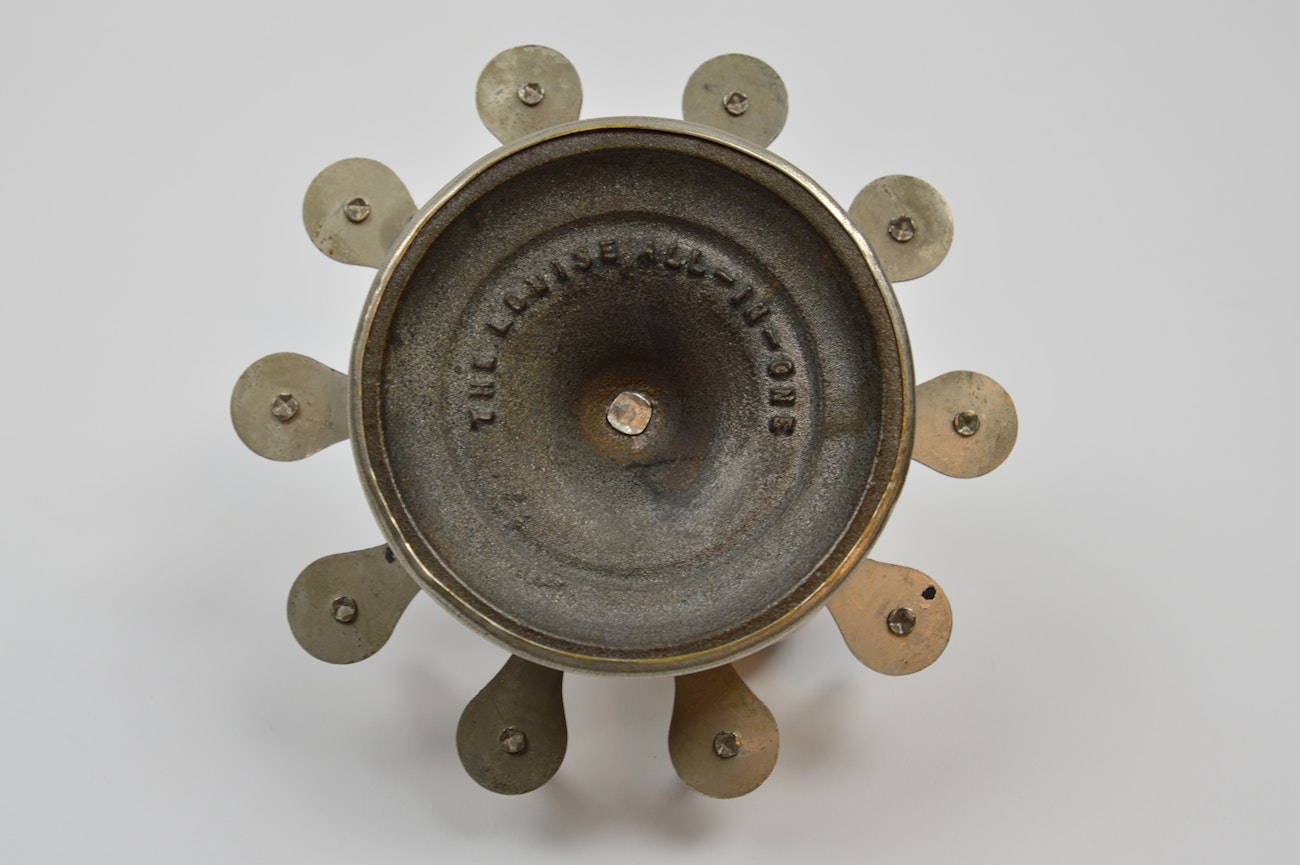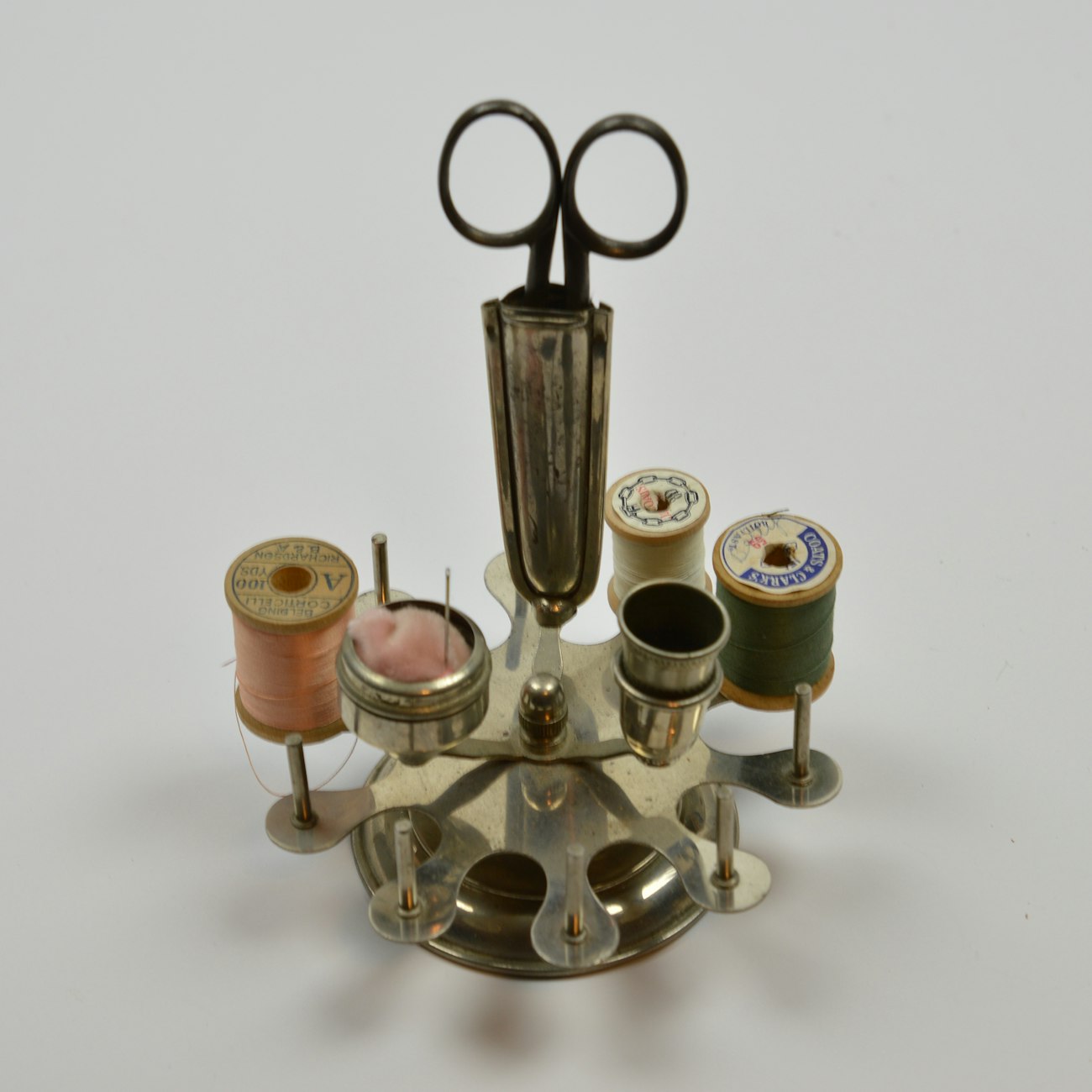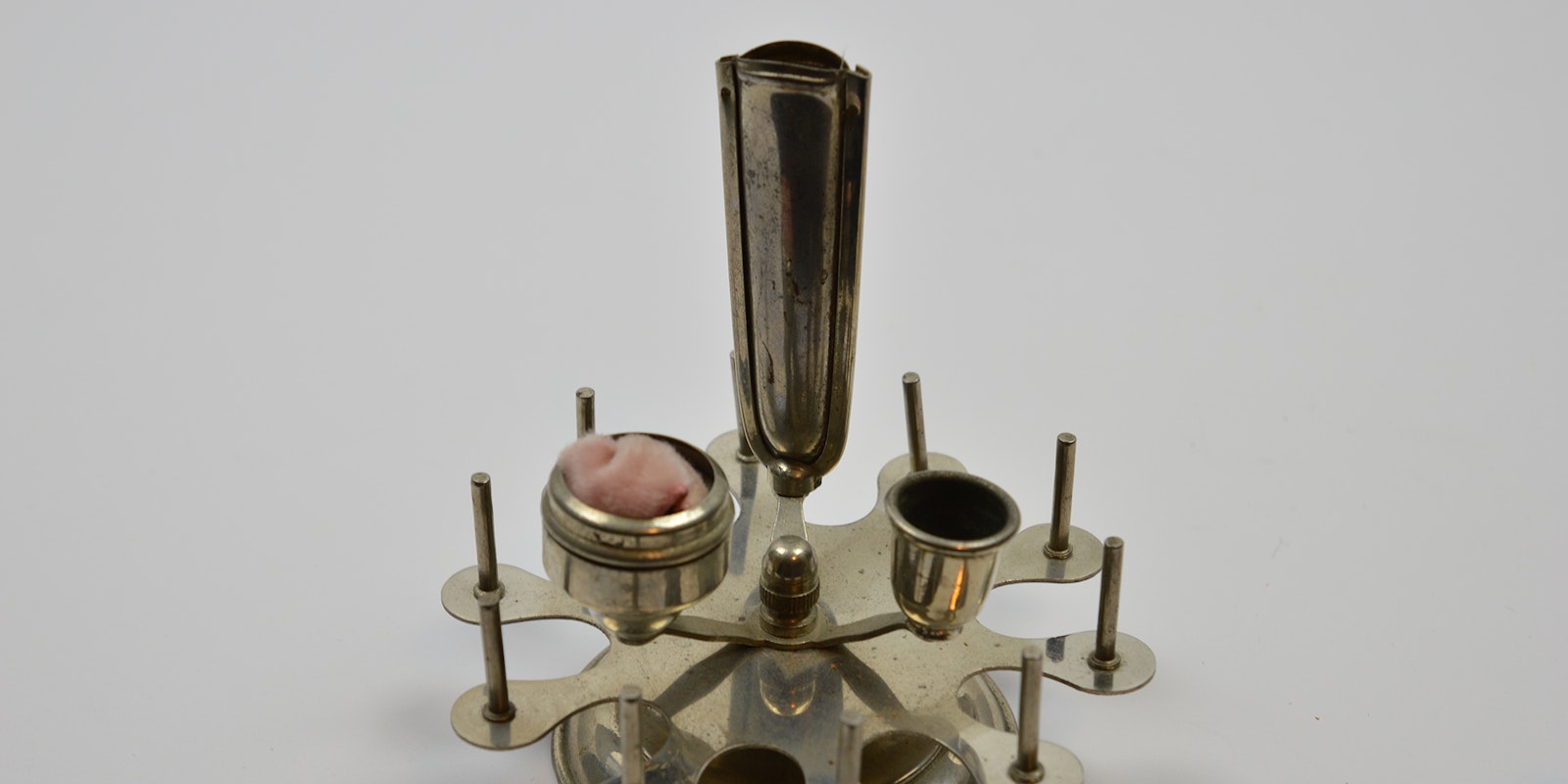The history of American female inventors is as old as our country. However, women often had to work with men in order to receive a patent and move into the business world. By 1910, women still accounted for less than 1% of all patents issued in the United States (see note 1). Successful women inventors often came up with solutions for household problems, being subject-matter experts themselves. In 1910, 21% of the U.S. labor force was women (see note 2). The majority of women and girls knew how to sew and did so on an almost daily basis. Not all sewing was out of necessity or at the level of the nineteenth century. Ideas to improve their notions and tools were readily at hand.
 Patent drawing of the Louise All-In-One sewing stand.
Patent drawing of the Louise All-In-One sewing stand.
The Louise All-In-One sewing stand was invented and patented (Patent 967,941) by Louise B. Laridon on August 23, 1910. In her patent application, Louise stated her goals for the stand were to provide a sewing aid that was compact, attractive, durable, and economical to produce. Putting her name on the base of the All-In-One may have also been a marketing strategy to imply a female endorsement to the usefulness of the sewing stand.

The base of The Louise All-In-One sewing stand includes the name molded into the form.
The All-In-One has the appearance of sterling silver at first glance and has an appealing size for table-top use. The design consists of a round sheet-metal base topped with a revolving ten-armed disc. Each arm on the disc has a post for holding spools of thread. In the center of the disc is another piece of metal with three arms. There is an arm mounted with a velvet-topped pincushion for needles and pins, a cup for holding a thimble, and an upright sheath to hold scissors. Louise also designed the attached scissor sheath to be used as a handle to carry the All-In-One.

The Louise All-In-One filled with notions: scissors, thimble, and wooden spools of thread. The stand can accommodate 10 spools of thread.
Louise holds two other patents, for a garment stiffener (1909) and a collar supporter (1912), plus one for a similar sewing stand with fewer arms (Patent 40,861 in 1910). This makes Louise part of the 1% of female inventors in early twentieth-century America. Like other female inventors, little else can be found about Louise or the manufacture of the Louise All-In-One.
Notes
- Exploring the History of Women Inventors
- United States Census, 1910.
Dawn Cook Ronningen is the author of Antique American Needlework Tools (Schiffer, 2018). She lives in Minnesota, where she enjoys her extensive collection of antique textiles, embroidery, and needlework tools. She shares her collections on her blog, “Collector With A Needle,” and through various in-person and virtual programs.
Originally published September 29, 2021; updated November 4, 2024.

